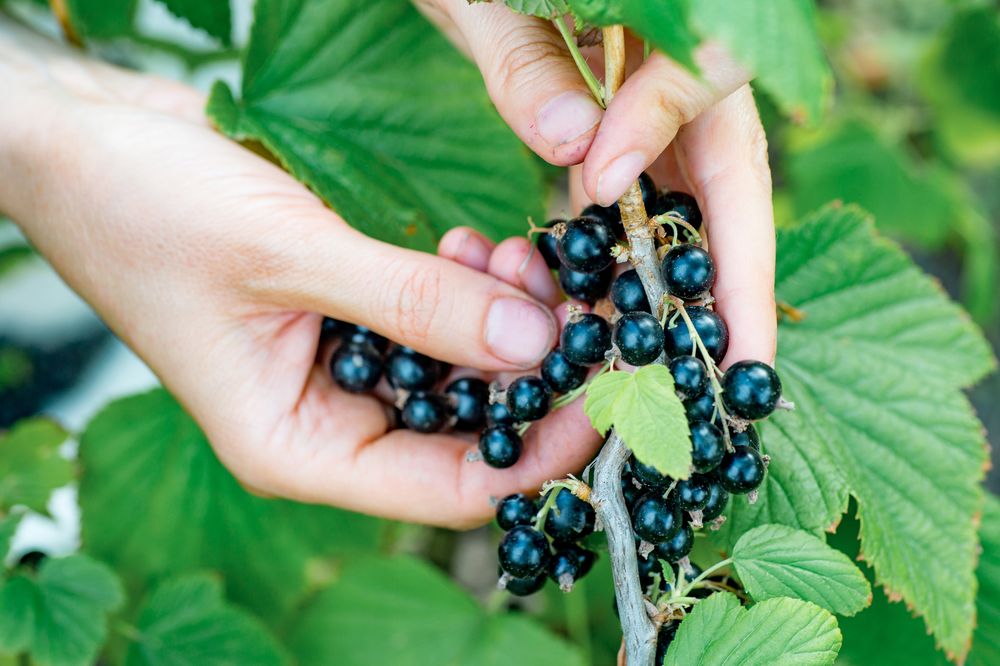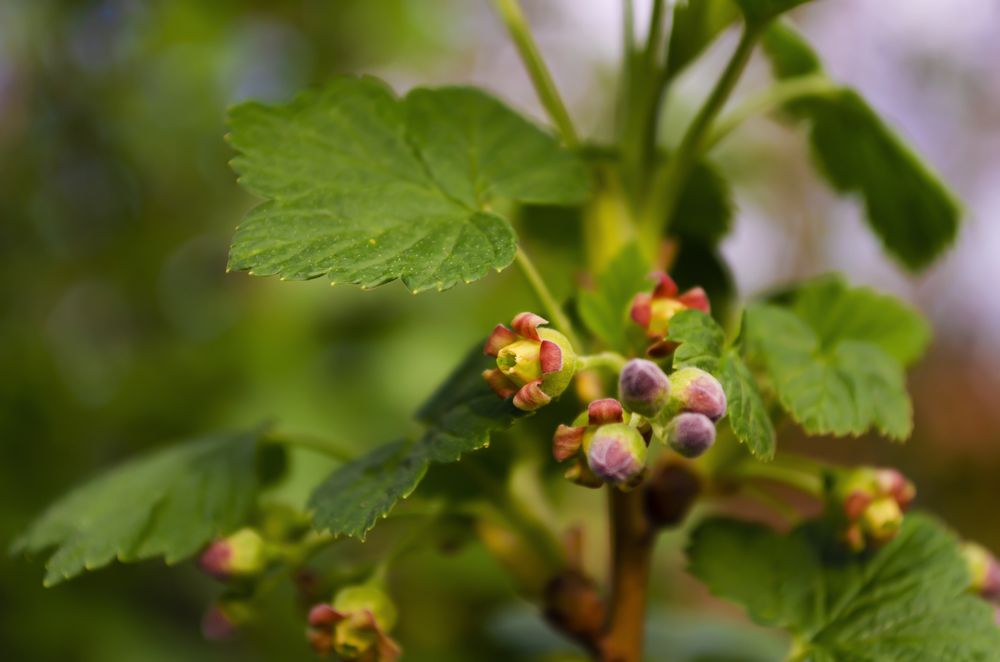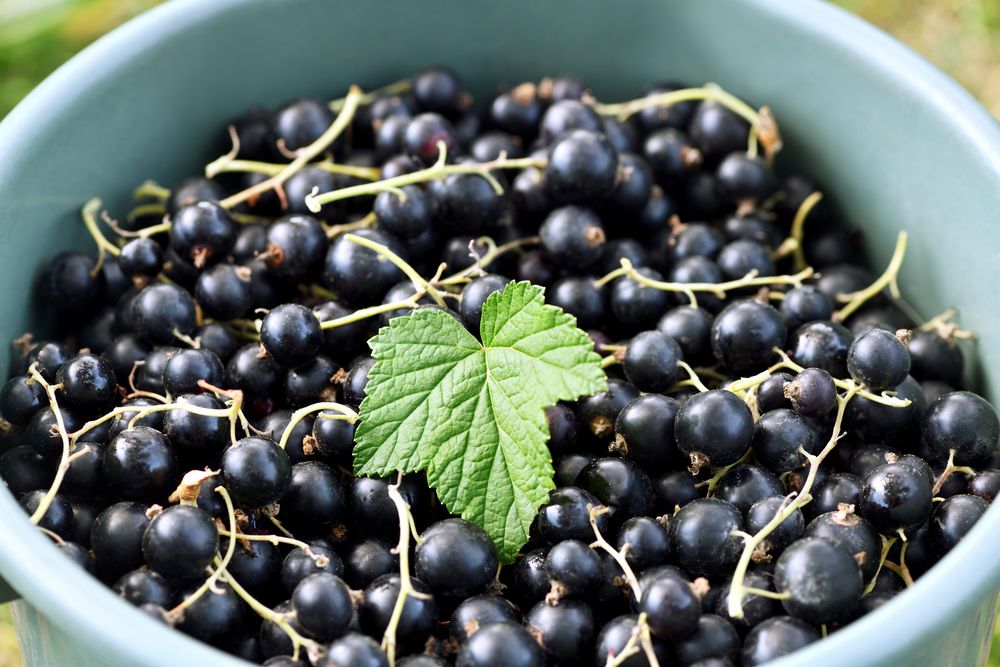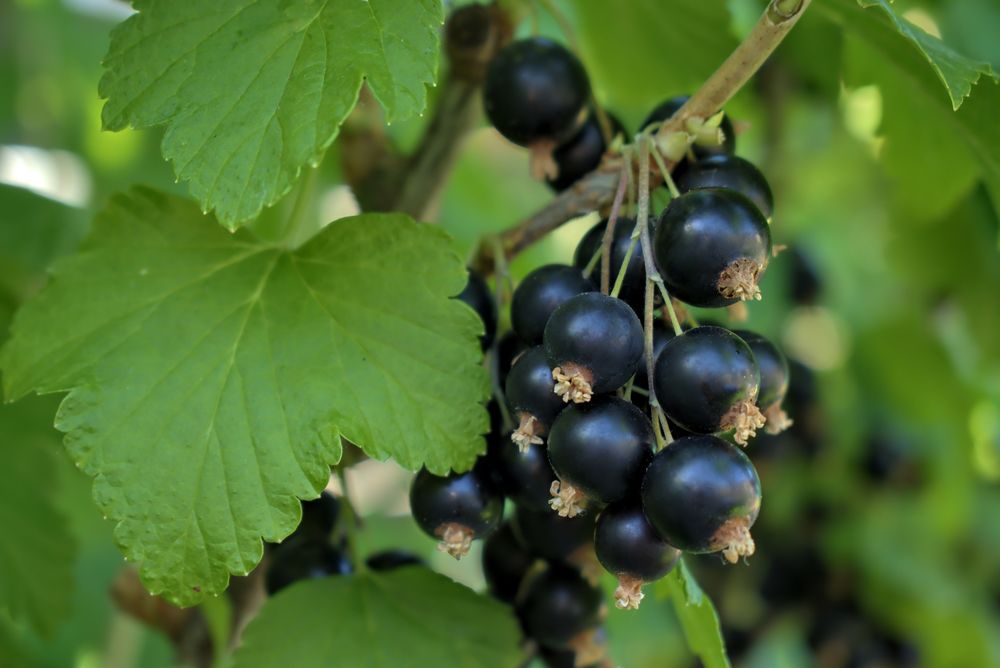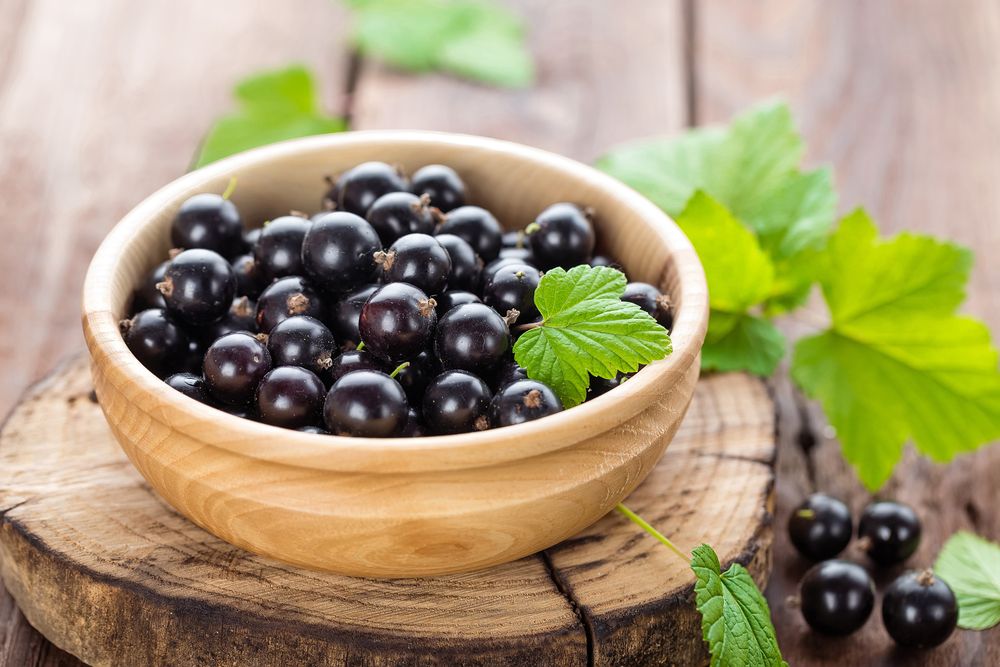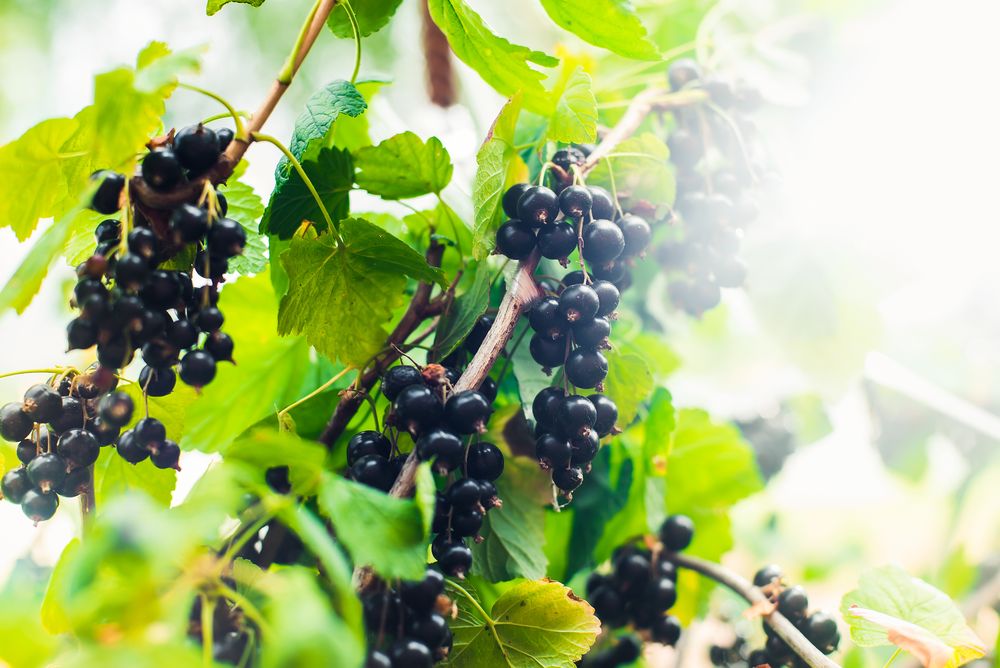Black Currant: Varieties, Growing, Caring, and Harvesting Tips
Black currant shrubs are relatively easy to grow and care for, making them a great option for those who want to enjoy fresh, homegrown fruit without a lot of hassle.
If you’re thinking about adding black currants to your home garden, read on to discover the best growing, caring, and harvesting tips.
This article teaches you how to grow, care for, and harvest black currants. But first, let’s find out what the black currant is, what the types of currants are, and what black currant varieties are best for your garden.
Table of Contents
Let’s begin with the black currant definition.
What is Black Currant?
Black currantis a deciduous shrub that produces edible berries. It’s probably the most famous species of all currants.
Here’s what you need to know about the black currant shrub:
- The black currant plant is a hardy perennial that grows mainly in the northern parts of Europe and Asia. But it’s also suitable for the cold regions in the US.
- European and Asian black currant is known as Ribes nigrum, while the American black currant goes by Ribes americanum.
- Black currant has a strong fragrance, and all parts of the plant are deliciously aromatic, from the leaves to stems and flowers.
- The average black currant shrub grows to about 5 feet tall and wide. Thanks to its manageable size, you can grow black currant in the garden or in a container kept on the balcony or patio. This way, you can enjoy its fragrance throughout the spring and summer months.
- Besides the edible berries, you can use the black currant shrub ornamentally if you’re looking for ways to beautify your garden, patio, or balcony.
- The leaves of the black currant shrub are light green and lobed. Each leaf is about 2 inches long and wide.
- The flowers of the black currant shrub are small – less than 1 inch wide, and they grow in clusters of 20 or more. They are bell-shaped and yellow, ranging from pale yellow to a green-white shade.
- Black currant blooms need insects for pollination. If you don’t have pollinators visiting your garden, you can hand-pollinate the flowers with a small paintbrush. If your region has warm temperatures, the blooms must be pollinated within 48 hours. But if you live in a cold microclimate, this time frame extends to a week.
- Black currant berries develop in mid-summer and change from green to black as they ripen. Expect up to 10 pounds of black currants from your established brush.
- You can eat ripe black currants raw since they have a delicate tarty flavor. Or you can use them in jams, jellies, juices, and desserts.
- When it comes to health benefits, ripe black currants are rich in vitamin C, manganese, iron, and potassium.
In the next section, discover the types of currants.
Types of Currants
As mentioned in the previous section, black currant is just one type of currants. Here are other currant varieties that you could grow in your garden if you want to complement the black currant:
- Red currant (Ribes sativum) is a self-pollinating species with slightly acidic berries that turn red when ripe. You can use red currants to make jams and bake cakes. A single red currant shrub is enough for your garden since it bears both male and female flowers.
- White and pink currants (Ribes sativum) are two varieties of the same species as red currant, but their fruits are bleached. Many people look at the white and pink currants as the albino varieties of the red currant. The fruits of white and pink currants are less acidic and can be eaten fresh when ripe.
- Gooseberry (Ribes hirtellum) is a self-fertile species of currant. It has translucent fruits that turn pink or red, or remain green when ripe. As the berry of gooseberry develops, the flower wilts but remains stuck to the end of the berry. So you must remove the faded flower of gooseberry before eating the fruit.
- Jostaberry is a hybrid between gooseberry and black currants. It has black fruits, sweeter than gooseberries. This hybrid is less prone to diseases that affect black fruits and gooseberry shrubs. Plus, jostaberry doesn’t have any thorns, and they are easier to grow.
In the next section, discover the black currant varieties.
Black Currant Varieties
There are multiple black currant varieties, such as Ben Connan, Ben Hope, Ben Lomond, Ben Sarek, Big Ben, Blackdown, Ebony, Crandall Foxendown, and Titania.
Not all black currant varieties are suitable for growing in a small-sized garden since some of them aren’t self-pollinating. So you would need two or more shrubs within 5 – 6 ft. (1.5 – 1.8 m.) of each other to ensure their pollination, which calls for a medium- to large-sized garden that not all people have.
This section describes three black currant varieties that are suitable for average gardens – Ben Sarek, Crandall, and Titania:
- Ben Sarek is a black currant variety that grows well in zones 3 and 4. The shrubs of Ben Sarek are compact, but the berries are quite large. Ben Sarek tolerates frost well, even during the flowering season. Plus, it’s resistant to white pine disease but less tolerant to powdery mildew compared to other black current varieties.
- Crandall is a black currant variety prized for its ornamental value. It’s aromatic and grows in zones 3 and 4. Sadly, like most black currant varieties, Crandall is prone to white pine and powdery mildew. On top of that, the shrub needs a trellis to support the weak canes.
- Titania is one of the few black currant varieties that withstand white pine and powdery mildew. The berries of Titania are large, and the shrub starts flowering within 3 years of planting. On average, Titania grows to 6 feet tall, and its berries ripen sooner than other black currant varieties.
In the next section, find out how to grow black currant.
How to Grow Black Currant
There are two ways to grow the black currant shrub: from seeds or using a potted sapling.
It’s challenging to grow black currant using seeds since it requires patience that many gardeners don’t have.
Growing black currant using a sapling is significantly easier. If you, like most people, prefer this method, just visit your local nursery to purchase a black currant sapling. The alternate solution is to buy a black currant sapling online, but there’s a good chance that you will receive it bare root.
Follow these steps to grow your black currant shrub using a sapling:
- Start the black currant sapling in the early spring as soon as the soil is warm enough to till. Even if the temperature is around 20 degrees F (-6.6 degrees C), you can still plant the sapling, especially if you have selected a frost-tolerant variety like Ben Sarek.
- If you have a bare root black currant sapling, be sure to check the roots moist and not let them dry out. A good idea is tosoak the roots in a bucket of water for 3 hours before planting the sapling.
- Break the top 10 inches of the soil and mix in aged manure to give the sapling a good start.
- Dig a hole 1 inch deeper than the soil mark on the stem of the sapling and a little wider than the diameter of the root ball.
- Spread the roots of the black currant sapling in the hole.
- Backfill the hole with soil and firm it well enough so that the sapling can stand upright without help.
- Add more soil to cover the lower canes to encourage robust root system growth.
- Water the black currant sapling immediately and keep the soil moist to reduce the shock of transplanting.
- If you’re planting more than one black currant shrub, space them 5 – 6 ft. (1.5 – 1.8 m.) apart.
In the next section, check out our black currant caring tips.
Black Currant Care
This section describes the growing conditions for black currant shrubs when it comes to soil, water, fertilizer, pruning, and pests and diseases.
Let’s start with the soil needs.
Soil
Black currant shrubs are one of the few plants that thrive in clay or silt soil. Unlike most plants, the robust root system of the black currant shrub won’t be impeded by the dense clay texture of the soil. Still, it’s a good idea to amend the soil so that it drains well since the black currant plant doesn’t like waterlogged soil.
Test the soil to ensure the pH levels are neutral or close to this level (pH 7). Even if the berries taste a bit tarty, the black currant shrub doesn’t thrive in acidic or alkaline soil. So if the soil test results show a value between pH 6.5 and 7.0, your soil will not need any amendment. Otherwise, you have to improve your heavy clay soil.
In the next section, check out the water needs.
Water
Black currant shrubs must be continuously moist since they don’t tolerate drought. The good news is that zones 3 and 4 are unlikely to have sweltering hot summer sun that would dry the soil quickly. Still, you might need to mulch the shrubs to improve water retention.
In addition to improving water retention, mulching fights off weeds, which are the natural enemies of black currant shrubs. Make sure to remove weeds regularly since they slow down the growth of the black currant shrubs.
As for the water quota, black currant shrubs need 1 – 1/2 inches of water per week. Water lightly but regularly, and don’t let more than 1 inch of the topsoil dry out between irrigations.
In the next section, check out the fertilizer needs.
Fertilizer
Here are useful tips for fertilizing your black currant shrub:
- Avoid nitrogen-high fertilizers and use slow-release chemical fertilizers instead.
- Side-dress solely with organic compost, rotten manure, and homemade fertilizers.
- Feed the black currant shrub with potassium supplements to improve its disease resistance.
- Start applying the slow-release fertilizer in early spring until the berries are ripe in mid-summer.
- Hold off fertilizing until the following spring to allow the black currant shrub to rest and prepare for the winter.
- Apply the fertilizer once a month or every three weeks, according to the needs of the shrub.
In the next section, check out the pruning tips.
Pruning
To keep your black currant shrub healthy and improve its annual yield, you must prune it regularly. Even before the shrub is old enough to flower and bear fruit, keep your pruning shears handy to cut back those canes and encourage fresh growth.
Here are useful tips for pruning your black currant shrub (by years):
- By the end of the first year, cut the black currant shrub back to 4 or 5 canes so that it becomes bushier in the next spring.
- By the second year, cut all the old canes except for 4 canes and reduce the new ones to 5 canes.
- When the black currant shrub reaches its third year, prune the canes, leaving about 3 or 4 canes from each year’s growth.
- In the fourth and following years, cut back all canes older than 3 years since berries barely grow on old canes.
In the next section, check out the pests and diseases.
Pests and Diseases
White pine and powdery mildew are the two major diseases that cause chaos in the black currant shrub.
Although not fatal, white pine disease is more serious than powdery mildew since it slows down the growth of the black currant shrub, reducing the annual harvest.
Powdery mildew is a fungal infection caused by high humidity, low ventilation, and wet foliage. To prevent powdery mildew from forming on your black currant shrubs, avoid spilling water on the foliage and improve air ventilation around and inside the canes.
As for pests, you watch out for birds that feed on the black currant buds in the winter and berries in the summer. To protect your black currant shrubs from bird damage, cover the plants with bird nets, especially when the berries are about to ripen.
In the next section, find out how to harvest black currant.
Harvesting Black Currant
Compared to other types of currants, it’s easy to tell when black currant berries are ripe since they turn blue-black, and the skin becomes glossy. The surest way to tell is by picking a berry and tasting it. If it’s sweet, your berries are ready to harvest, so you should pick them before the birds do.
It’s essential to remember that not all berries ripen at the same time. The fruits at the top of each strig of black currant shrub are the ones that ripen first. But once you start the harvest season, you must collect ripe berries every week until the entire crop is collected.
To correctly harvest and store berries from black currant shrubs, remove the stems from the ripe berries, place them in a container, and transfer them to the fridge. Berries remain fresh in the fridge for up to 3 – 4 weeks.
The next section provides you with additional information about black currants.
FAQ
This section gives you simple answers to common questions about black currant.
What does black currant taste like?
Black currants have a tart, fruity flavor, similar to a cross between raspberries and blackberries.
What are the side effects of black currant?
Black currant may cause mild side effects such as stomach upset, diarrhea, and headache. More serious side effects are rare but may include allergic reactions and kidney problems. If you experience any unusual symptoms after taking black currant, stop taking the supplement and speak to your doctor.
Are black currants good for you?
Yes, black currants are a good source of vitamins and antioxidants. They may help boost the immune system, improve heart health, and reduce inflammation.
The next and final section summarizes the entire article on growing and caring for black currant shrubs.
Conclusion
To review, it’s possible to grow black currant shrubs in your garden, but it’s essential to pick a good variety.
For a cold-hardy shrub, black currant has little tolerance for dry soil and can fall prone to diseases such as white pine and powdery mildew.
So choose a disease-resistant variety and make sure you water the shrub regularly. If it’s a self-fertile variety, you won’t have to worry about pollination as long as you get plenty of bees and monarch butterflies in the garden.
What are your favorite tips for growing black currant shrubs? Share your thoughts in the comments below!
